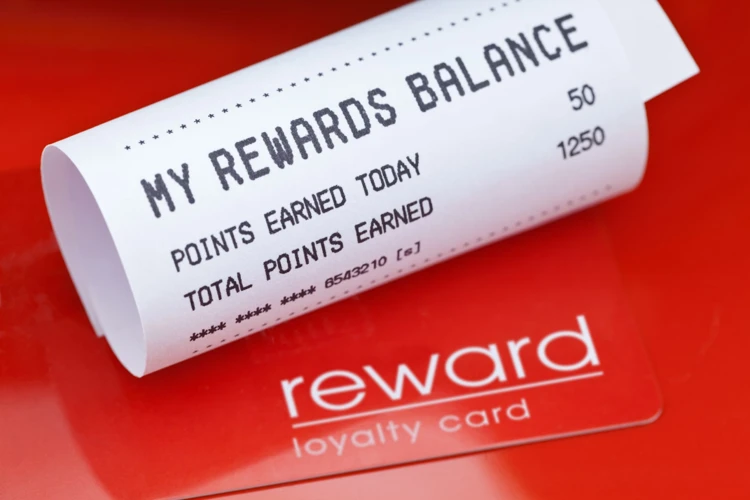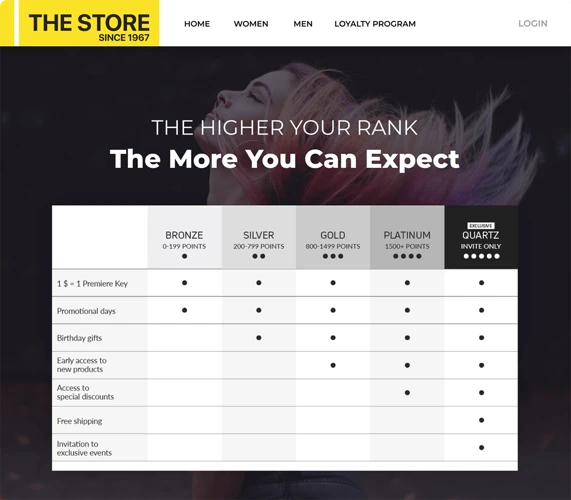Effective Strategies for Nurturing Brand Loyalty
Achieving and maintaining brand loyalty is crucial for the long-term success of any business. In today’s competitive market, it’s essential to create a strong bond with your customers. This article explores six effective strategies that can help you build and nurture brand loyalty. From maintaining a consistent brand image to offering personalized rewards, fostering a sense of community, providing exceptional customer service, implementing a tiered loyalty program, and connecting with customers’ values, each strategy plays a vital role in creating a loyal customer base. By implementing these strategies, you can cultivate a lasting relationship with your customers, ensuring their continued support and advocacy for your brand. Join us on this journey to uncover the secrets of building and nurturing brand loyalty.
Contents
1. Be Consistent

Consistency is a fundamental aspect of building and nurturing brand loyalty. To establish a strong bond with your customers, it is crucial to maintain consistency in both your brand image and customer experiences.
Having a consistent brand image is essential for creating a recognizable and memorable brand. Your brand image encompasses your logo, colors, typography, and overall visual identity. By ensuring that these elements remain consistent across all platforms and touchpoints, you create a cohesive and unified brand presence.
Consistency in your brand image also extends to your messaging and tone of voice. It is important to communicate your brand values and personality consistently through your marketing materials, website content, social media posts, and any other customer-facing communications. This consistency helps to reinforce your brand identity and build trust with your audience.
Consistency in customer experiences is equally important in fostering brand loyalty. Customers want to have confidence that every interaction with your brand will be consistent and meet their expectations.
This consistency should be evident in all aspects of the customer journey, from initial contact to post-purchase support. Ensure that your website, physical stores (if applicable), customer service channels, and any other touchpoints deliver a consistent experience.
Consistency in customer experiences means delivering the same level of quality, professionalism, and attention to detail every time. Whether it’s through prompt and helpful customer service, a seamless online shopping experience, or consistent product quality, your customers should feel confident in your ability to consistently meet their needs.
By maintaining a consistent brand image and providing consistent customer experiences, you create a sense of reliability and trustworthiness that encourages customers to remain loyal to your brand.
To learn more about the importance of consistency in building brand loyalty, you can read this article: Importance of Consistency in Building Brand Loyalty.
1.1 Maintain a consistent brand image
Maintaining a consistent brand image is crucial for cultivating brand loyalty. Consistency in branding helps customers recognize and remember your brand, making it easier for them to connect with your products or services. A consistent brand image includes elements such as your logo, color palette, typography, and tone of voice.
When it comes to your logo, use it consistently across all platforms and marketing materials. This ensures that customers can easily identify your brand no matter where they encounter it. Additionally, stick to a consistent color palette that represents your brand’s personality and values. This helps create a visual identity that is instantly recognizable to your audience.
Typography is another important aspect of your brand image. Choose a set of fonts that reflect your brand’s tone and use them consistently in all your communications. This creates a cohesive and professional look that reinforces your brand’s identity.
Maintaining a consistent tone of voice is essential for building brand loyalty. Your brand’s tone should align with your target audience and convey your brand’s personality consistently across all customer touchpoints. Whether it’s through social media posts, website content, or customer service interactions, ensure that your brand’s voice remains consistent and authentic.
Consistency in your brand image not only helps customers recognize and remember your brand but also builds trust and credibility. When customers see a consistent brand image, they feel more confident in their decision to choose your brand over competitors.
To learn more about the importance of maintaining a consistent brand image, you can check out our guide on brand guidelines at https://www.nopio.com/blog/brand-guidelines/. This guide provides valuable insights into developing effective branding standards that will help you establish and maintain a strong brand identity.
By prioritizing consistency in your brand image, you create a foundation for building and nurturing brand loyalty. This consistency helps customers develop a familiarity with your brand, making them more likely to choose your products or services and become loyal advocates for your brand.
Remember, maintaining a consistent brand image is just one of the effective strategies for nurturing brand loyalty. To explore the other strategies, continue reading our article on creating self-sustaining brand loyalty.
1.2 Provide consistent customer experiences
Consistency is key when it comes to creating a strong and loyal customer base. Providing consistent customer experiences is an essential strategy for nurturing brand loyalty. This means ensuring that every interaction a customer has with your brand, whether it’s through your apps, webpages, or brick-and-mortar stores, maintains a similar brand voice and feel throughout the entire customer journey.
Not only should the interactions customers have with your employees and through digital or phone conversations be predictable, but the quality of your product should also be the same every time, regardless of when or where customers make a purchase. This level of consistency helps to establish trust and reliability, which are crucial factors in building long-term relationships with customers.
By delivering on your brand promise and consistently meeting customer expectations, you can reinforce a positive brand image and increase customer satisfaction. Happy customers who consistently have positive experiences are more likely to remain loyal to your brand and recommend it to others.
To achieve consistency in customer experiences, businesses can utilize customer relationship management (CRM) software. This software allows you to track and manage all customer relationships in one place, ensuring that every customer receives the same level of service and attention.
Providing consistent customer experiences is an effective strategy for nurturing brand loyalty. By delivering on your promise and maintaining a high level of consistency, you can create a rock-solid brand that customers trust and rely on. This consistency will not only lead to returning customers but also attract new ones through positive word-of-mouth recommendations.
To learn more about how consistent customer experiences can help build brand loyalty, you can explore our article on brand loyalty through exceptional customer experiences.
2. Offer Personalized Rewards

When it comes to nurturing brand loyalty, offering personalized rewards can make a significant impact. By understanding your customers’ preferences and tailoring rewards to their individual needs, you can create a sense of appreciation and exclusivity.
To begin, it’s important to gather data on your customers’ preferences. This can be done through various means, such as analyzing their purchase history, conducting surveys, or tracking their online behavior. By understanding what your customers value and enjoy, you can design rewards that are truly meaningful to them.
Once you have gathered the necessary information, it’s time to tailor the rewards to each customer. This can be done through a tiered system, where customers earn points or reach different levels based on their loyalty. The rewards can range from discounts and special offers to personalized gifts and experiences.
For example, you can offer a loyal customer a personalized birthday message with a discount or bonus. This not only shows your appreciation for their continued support but also makes them feel special and valued. Additionally, you can provide exclusive access to events or early product launches, giving them a sense of exclusivity.
By offering personalized rewards, you create a unique and memorable experience for your customers. They will feel that their loyalty is recognized and rewarded, strengthening their connection to your brand. This personal touch can go a long way in building long-term brand loyalty.
To learn more about the power of rewards for brand loyalty, check out our article on the power of rewards.
2.1 Understand your customers’ preferences
Understanding your customers’ preferences is essential for nurturing brand loyalty. By investing time and effort into comprehending their needs, preferences, and pain points, you can tailor your products, services, and interactions to better meet their expectations.
Market research, customer feedback analysis, and customer analytics are valuable tools for gaining insights into your customers’ preferences. Conducting market research allows you to gather information about your target audience, their demographics, and their buying behaviors. This knowledge can help you identify trends and patterns that can inform your marketing and product development strategies.
Analyzing customer feedback is another crucial aspect of understanding your customers’ preferences. By actively listening to what your customers have to say, whether it’s through surveys, reviews, or social media comments, you can gain valuable insights into their likes, dislikes, and areas for improvement. This feedback can guide you in making necessary adjustments to your products or services to better align with customer preferences.
Additionally, utilizing customer analytics can provide you with quantitative data on customer behavior, such as purchase history, browsing patterns, and engagement levels. This data can reveal patterns and trends that can help you understand your customers’ preferences and tailor your marketing efforts accordingly.
By understanding your customers’ preferences, you can personalize the customer experience and build their confidence in your brand. Knowing their preferred contact channels, addressing them by their preferred name, and giving them the option to choose how they interact with your brand can create a sense of personalization. This personalized experience shows that you value their preferences and enhances their satisfaction with your brand.
Understanding customer psychology is another crucial element of understanding their preferences. Customers want to feel valued, listened to, and cared for. By analyzing and understanding their behavior and emotions, you can better serve them and address their needs effectively. This deep understanding of customer psychology can lead to higher customer satisfaction rates and foster brand loyalty.
Understanding your customers’ preferences is a vital step in nurturing brand loyalty. By conducting market research, analyzing customer feedback, utilizing customer analytics, and understanding customer psychology, you can tailor your products, services, and interactions to better meet their expectations. This personalized approach creates a positive customer experience and builds their confidence in your brand, ultimately leading to long-term brand loyalty.
For more information on nurturing brand loyalty, you can read our article on creating a self-sustaining brand loyalty.
2.2 Tailor rewards to individual customers
Tailoring rewards to individual customers is another key strategy for nurturing brand loyalty. By understanding your customers’ preferences and gathering data on their behavior and interests, you can create personalized rewards that make them feel valued and appreciated.
One effective way to tailor rewards is by offering exclusive discounts or promotions based on each customer’s past purchases or browsing history. For example, if a customer frequently purchases skincare products, you can send them a personalized discount code for their favorite brand or offer them a free sample of a new product in that category.
Another approach is to provide personalized services that cater to each customer’s specific needs. For instance, if you have a clothing brand, you can offer free alterations or personalized styling advice to loyal customers. These services not only make the shopping experience more convenient but also show that you understand their preferences and are willing to go the extra mile to meet their needs.
Additionally, you can use the information you have about your customers to offer product recommendations that align with their interests and previous purchases. By sending them relevant content such as blog posts or videos, you demonstrate that you understand what they’re looking for and can provide them with valuable resources.
It’s important to note that while tailoring rewards to individual customers is effective, it’s crucial to strike a balance. Avoid overwhelming customers with too many personalized offers, as this can diminish the sense of exclusivity and excitement. Instead, create a sense of anticipation by periodically surprising them with personalized rewards or perks.
By tailoring rewards to individual customers, you not only show that you value their loyalty but also create a unique and memorable experience that sets your brand apart from the competition. This level of personalization enhances the customer’s connection to your brand and increases the likelihood of repeat purchases and long-term loyalty.
[Link to ‘Harnessing Advocacy from Brand Loyal Customers’](harnessing-advocacy-brand-loyal-customers/)
3. Create a Sense of Community

Building a sense of community is a crucial aspect of nurturing brand loyalty. When customers feel like they belong to a community, they are more likely to engage with the brand and develop a stronger connection. To create this sense of community, it is important to foster an online space where customers can come together and interact. This can be done through forums, social media groups, or dedicated platforms for brand enthusiasts.
Within this community, it is also essential to encourage user-generated content. By allowing customers to share their experiences, opinions, and ideas, you are giving them a platform to express themselves and contribute to the brand. This not only creates a sense of ownership but also showcases the value that users derive from being part of the community.
To further strengthen the community, it is important to recognize and reward top contributors. By acknowledging their efforts, you are not only motivating them to continue engaging but also setting an example for other members to follow. This recognition can come in the form of shoutouts, exclusive privileges, or even tangible rewards.
By fostering a sense of community, brands can tap into the power of collective identity. When customers feel a strong sense of belonging and connection to the brand and its community, they are more likely to become loyal advocates. They will actively promote the brand, recommend it to others, and defend it against criticism.
Creating a sense of community also allows brands to gather valuable insights and feedback from their customers. By facilitating open and honest discussions, brands can gain a deeper understanding of their customers’ needs, preferences, and pain points. This information can then be used to improve products, services, and overall customer experience.
Creating a sense of community is an effective strategy for nurturing brand loyalty. By fostering an online space for customers to engage, encouraging user-generated content, and recognizing top contributors, brands can cultivate a loyal customer base. This community-driven approach not only strengthens the bond between the brand and its customers but also provides valuable insights and advocacy. To learn more about harnessing the power of brand loyal customers, you can read our article on harnessing advocacy from brand loyal customers.
3.1 Foster an online community
Building an online community is a powerful way to foster a sense of belonging among your customers and create a loyal customer base. By establishing an online platform where your customers can connect with each other and with your brand, you can create a space for them to engage, share their experiences, and provide feedback.
One effective way to foster an online community is by actively engaging in online forums and discussion groups related to your industry or niche. By offering support, insights, and valuable information to others, you can establish yourself as an expert and build credibility within the community. This can attract potential community members who are seeking guidance and knowledge.
Another strategy is to utilize social media platforms to follow and interact with professionals in your industry. By exchanging ideas, insights, and experiences, you can expand your network and attract like-minded individuals who may be interested in joining your online community.
Attending virtual events such as webinars and conferences focused on your expertise can also help you connect with other people in your industry. These events provide opportunities to form relationships, exchange knowledge, and potentially attract new members to your online community.
To strengthen and expand your community, it’s important to conduct online events. These gatherings enable the sharing of ideas and the formation of stronger relationships among members. By maintaining communication with current members and providing valuable content through online events, you can entice others to join your growing network.
Remember, fostering an online community takes time and effort. It’s important to create a welcoming environment that encourages members to participate in discussions, share their experiences, and provide feedback. Responding to questions and comments in a timely and helpful manner is crucial in building trust and credibility with your members.
By following these strategies and focusing on fostering engagement and growth within your online community, you can create a loyal customer base that supports the long-term success of your brand.
3.2 Encourage user-generated content
Encouraging user-generated content is a powerful way to foster a sense of community and increase brand loyalty. When customers are given a platform to share their experiences, opinions, and recommendations, they feel more connected to the brand and invested in its success. This sense of ownership and connection can lead to increased engagement and loyalty over time.
One effective way to encourage user-generated content is by creating contests or promotions that incentivize customers to share their stories, reviews, or recommendations. For example, you can run a contest where customers can submit a photo or video of themselves using your product, and the best entry wins a prize. This not only encourages customers to engage with your brand but also creates a buzz around your products or services.
Another strategy is to actively engage with customers on social media platforms. By responding to their comments, questions, and reviews, you show that you value their input and appreciate their engagement. This not only encourages them to continue sharing their thoughts but also shows other potential customers that you are responsive and attentive to customer feedback.
Additionally, you can create a dedicated space on your website or app for customers to share their experiences and recommendations. This can be in the form of a review section, a forum, or a Q&A platform. By providing this space, you empower your customers to become advocates for your brand and create a community where they can connect with like-minded individuals.
Remember to highlight and showcase user-generated content across your marketing channels. This can include featuring customer reviews on your website, sharing customer stories on social media, or creating blog posts or videos that highlight customer experiences. By amplifying the voices of your customers, you not only strengthen the sense of community but also build trust and credibility with potential customers.
Encouraging user-generated content is a powerful strategy for nurturing brand loyalty. By providing customers with a platform to share their experiences and opinions, you create a sense of community and increase engagement. Implementing contests, actively engaging with customers on social media, and creating dedicated spaces for user-generated content are effective ways to encourage participation. Remember to showcase and amplify user-generated content to build trust and credibility. By embracing user-generated content, you can cultivate a loyal customer base and drive growth for your brand.
4. Provide Exceptional Customer Service

A key aspect of providing exceptional customer service is ensuring that your customer service team is well-trained and empowered to handle any customer inquiries or concerns. Invest in comprehensive training programs that equip your team with the knowledge and skills they need to address customer needs effectively. By empowering your team, you enable them to make decisions and take actions that prioritize customer satisfaction.
Being responsive and proactive in addressing customer concerns is crucial for providing exceptional customer service. Respond promptly to customer inquiries or complaints, showing that you value their time and concerns. Take the initiative to reach out to customers, even before they raise an issue, to ensure their satisfaction. By being proactive, you can identify potential problems before they escalate and take steps to resolve them swiftly.
Remember, exceptional customer service goes beyond just resolving issues—it involves going the extra mile to exceed customer expectations. This may include offering personalized solutions, providing discounts or store credit for their next purchase, including handwritten notes when shipping products, or responding personally to social media comments. By consistently providing exceptional customer service, you create a positive and lasting impression that builds loyalty and encourages customers to refer your business to others.
Investing in a CRM (Customer Relationship Management) system can also enhance your ability to provide exceptional customer service. A CRM allows you to gather and analyze customer data, track interactions, and personalize the customer experience. With this valuable information at your fingertips, you can better understand your customers’ needs and preferences, enabling you to tailor your products, services, and interactions to meet their expectations effectively.
Providing exceptional customer service is essential for nurturing brand loyalty. By training and empowering your customer service team, being responsive and proactive in addressing customer concerns, and utilizing a CRM system, you can ensure that your customers receive the level of support and service that exceeds their expectations. This dedication to exceptional customer service will foster loyalty, encourage positive referrals, and contribute to the long-term success of your brand.
4.1 Train and empower your customer service team
Training and empowering your customer service team is essential in providing exceptional customer service and nurturing brand loyalty. By giving each team member the responsibility and authority to make decisions when interacting with customers, you empower them to go above and beyond in meeting customer needs.
To ensure your team is well-equipped for the job, provide them with the necessary tools and resources. This can include help desk software and live chat software, which enable efficient and effective communication with customers. By investing in these top customer service tools, your team can wow customers with their responsiveness and problem-solving abilities.
In addition to training and providing tools, it’s important to motivate and recognize your customer service team. Happy employees lead to happy customers, so finding ways to boost morale and show appreciation for their hard work can make a significant impact. Consider recognizing team members for their accomplishments, whether through a quiet word of affirmation or a team-wide announcement. You can also introduce special incentives or gift coupons for the best-performing employee and declare an employee of the month with a cash prize and appreciation letter. These small gestures can go a long way in empowering your team and fostering a positive customer service culture.
Consider implementing a mentoring program where senior team members mentor new customer support employees. This allows for seamless onboarding and knowledge transfer, ensuring that new team members are well-prepared to provide exceptional customer service.
Lastly, always emphasize the importance of listening to the customer. Encourage your team to truly hear and understand what customers want and need. Train them to strive for the perfect customer service interaction by learning from both positive and negative experiences. By putting themselves in the customers’ shoes and working to solve their issues while respecting their time, your team can build strong relationships and loyalty with customers.
Training and empowering your customer service team is a crucial aspect of providing exceptional customer service and nurturing brand loyalty. By giving them the responsibility, authority, and tools to excel in their roles, recognizing their achievements, and fostering a culture of listening and empathy, you can create a team that consistently delivers outstanding customer experiences.
4.2 Be responsive and proactive in addressing customer concerns
When it comes to providing exceptional customer service, being responsive and proactive in addressing customer concerns is paramount. Customers expect businesses to be attentive and quick to resolve any issues they may have. By promptly addressing their concerns, you can demonstrate your commitment to customer satisfaction and build trust in your brand.
One way to be responsive is by actively listening to your customers. Take the time to understand their concerns, opinions, and feedback. This will help you identify the root causes of their issues and find effective solutions. By showing genuine empathy and consideration, you can create a positive experience for your customers, even when they are facing difficulties.
Additionally, it is essential to be proactive in anticipating customer needs. By analyzing customer data and understanding their journey with your business, you can pinpoint key moments when intervention is necessary. This allows you to offer solutions before customers even have to ask for them, enhancing their overall experience with your brand.
Leveraging technology can also help you be more responsive and proactive. Implementing tools such as live chat, social media listening, and customer relationship management systems can enable you to monitor customer concerns in real-time. This allows you to address issues promptly and provide timely support.
Empowering your customer service team is crucial in delivering proactive customer service. Invest in training to ensure your team members are equipped with the necessary skills to address customer inquiries effectively. Encourage them to take ownership of customer concerns and empower them to make decisions that benefit the customer. This will enable them to respond promptly and proactively to customer concerns.
Being responsive and proactive in addressing customer concerns is a vital aspect of providing exceptional customer service. By actively listening, anticipating needs, leveraging technology, and empowering your team, you can create a positive and proactive customer service experience that fosters brand loyalty.
5. Implement a Tiered Loyalty Program

A tiered loyalty program is a powerful tool for nurturing brand loyalty. By implementing this program, you can create a customer ranking system that rewards customers based on their loyalty level. This not only motivates customers to engage more with your brand but also establishes a sense of exclusivity and social status among them.
To successfully implement a tiered loyalty program, it is important to keep it simple and easy to understand. Customers should be able to easily track their progress and know what benefits they can unlock at each tier. One effective way to showcase the different tiers is by displaying the percentage of program members in each tier, which can pique customers’ interest and encourage them to strive for higher ranks.
The key to a successful tiered loyalty program is to offer incremental benefits and rewards as customers advance through the ranks. Each tier should provide a more exclusive and personalized brand experience, giving customers a sense of achievement and motivation to continue ranking up. This not only keeps customers engaged for longer but also strengthens the emotional bond between them and your brand.
Higher-tier members should be rewarded with exclusive benefits that are not available to lower-tier members. This could include VIP access to special events, personalized offers, or early access to new products or services. By offering these exclusive benefits, you make your top-tier customers feel valued and appreciated, further deepening their loyalty to your brand.
Implementing a tiered loyalty program also allows for more effective segmentation of your customer base. By categorizing customers into different tiers, you can provide more targeted experiences and communication. This helps to build a stronger relationship with each customer and enhances their overall brand experience.
Implementing a tiered loyalty program is a crucial strategy for nurturing brand loyalty. By rewarding customers based on their loyalty level and offering exclusive benefits to higher-tier members, you can motivate customers to engage more with your brand and establish a strong emotional bond. This, in turn, leads to increased customer retention and long-term success for your business.
5.1 Reward customers based on their loyalty level
Rewarding customers based on their loyalty level is an essential aspect of a successful loyalty program. By implementing a tiered loyalty program, you can recognize and appreciate your customers’ loyalty by offering them exclusive rewards and benefits.
The key to this strategy is to set up different loyalty tiers based on specific criteria such as customer spend or engagement actions. As customers progress through these tiers, they unlock new and more valuable rewards. This progression creates a sense of achievement and motivates customers to continue engaging with your brand.
One way to reward customers based on their loyalty level is by offering tier-specific discounts. For example, customers in the lower tiers may receive a small discount on their purchases, while those in the higher tiers enjoy more significant discounts. This not only incentivizes customers to make repeat purchases but also makes them feel valued and appreciated.
Another effective way to reward customers based on their loyalty level is by providing them with early access to new products or exclusive promotions. By granting higher-tier members first access to these offerings, you make them feel like VIPs and create a sense of exclusivity. This can generate excitement and anticipation among your loyal customers, further strengthening their connection with your brand.
You can consider offering personalized rewards based on each customer’s loyalty level. This can be done by collecting data on their preferences and past purchases. For example, you can offer higher-tier members the opportunity to choose from a selection of rewards tailored to their interests. This personalized approach adds an extra layer of value and makes the rewards more meaningful to the individual customer.
To ensure the success of your tiered loyalty program, it’s crucial to clearly communicate the benefits and requirements of each loyalty level. This can be done through a user-friendly interface where customers can easily track their progress and understand the rewards they are eligible for. Transparency and simplicity are key to providing a seamless experience for your customers.
Rewarding customers based on their loyalty level is an effective strategy for nurturing brand loyalty. By offering exclusive rewards and benefits, personalized offerings, and clear communication, you can create a sense of value and appreciation among your loyal customers. Implementing a tiered loyalty program allows you to engage with your customers on multiple levels and build a strong and lasting relationship with them.
5.2 Offer exclusive benefits to higher-tier members
To further enhance the loyalty and engagement of your top-tier customers, it is essential to offer them exclusive benefits that are not available to lower-tier members. These exclusive benefits add a touch of exclusivity and make your best customers feel valued and appreciated.
By reserving the best rewards and privileges for your highest-tier members, you create a sense of prestige and superiority among this select group. This exclusivity motivates them to continue striving for even greater rewards and status within your loyalty program.
The exclusive benefits can include a range of enticing offers, such as exclusive discounts, personalized services, early access to new products or services, VIP events or experiences, and special gifts. These benefits should be tailored to the preferences and interests of your higher-tier members, ensuring that they feel truly special and recognized for their loyalty.
By offering these exclusive benefits, you not only reward your best customers but also create a sense of FOMO (fear of missing out) among other members. This can encourage them to work harder to move up the loyalty tiers and gain access to these exclusive benefits.
Remember, the key is to make your higher-tier members feel prestigious and privileged. By providing them with exclusive benefits that are not available to lower-tier members, you create a strong incentive for them to remain loyal to your brand and continue engaging with your loyalty program.
Implementing a tiered loyalty program with exclusive benefits for higher-tier members is a powerful strategy to nurture brand loyalty and cultivate a dedicated customer base. It adds an element of exclusivity, satisfaction, and superiority to the customer experience, motivating them to continue their journey with your brand and become brand evangelists.
6. Connect with Customers’ Values
To truly connect with your customers, it’s important to align your brand with their ideals and aspirations. Take the time to understand what your customers value and believe in. This could be social causes, environmental sustainability, or supporting local communities. By incorporating these values into your brand identity, you show your customers that you share their beliefs and are committed to making a positive impact. This alignment creates a deep emotional connection and fosters a sense of loyalty and trust.
Another way to connect with your customers’ values is by rewarding them for living actively or caring for the environment. For example, you can offer loyalty points or exclusive discounts to customers who engage in activities that promote a healthy lifestyle, such as participating in fitness challenges or purchasing sustainable products. By recognizing and rewarding these behaviors, you show your customers that you value their commitment to their personal well-being and the planet. This not only strengthens their loyalty to your brand but also reinforces the positive association they have with your brand.
By connecting with your customers’ values, you demonstrate that your brand is more than just a product or service. You become a trusted partner who shares their beliefs and supports their aspirations. This deep emotional connection builds customer loyalty and advocacy, driving sustainable business growth. So take the time to understand your customers’ values and authentically incorporate them into your brand identity. Show them that you care about what they care about, and watch as your customer base grows and thrives.
6.1 Align your brand with their ideals and aspirations
To truly connect with your customers and build brand loyalty, it is essential to align your brand with their ideals and aspirations. This means understanding their values and incorporating them into your brand identity. By doing so, you can create a deep and personal connection with your target audience.
Start by gaining a deep understanding of your customers’ values and how they relate to their emotions and self-perception. This knowledge will form the foundation for aligning your brand with their aspirations. Research and analyze your target audience to uncover what matters most to them and what they want to achieve.
Once you have a clear understanding of your customers’ values, you can authentically incorporate them into your brand identity. This involves reflecting these values in your brand’s purpose, mission, and messaging. Your brand should resonate with your audience, showing that you understand and share their beliefs.
Differentiate yourself from competitors by highlighting the unique brand attributes that align with your customers’ ideals and aspirations. This can involve taking a stand on important issues or demonstrating your commitment to causes that matter to your target audience. Authenticity is key in this process, so be true to your brand’s values and communicate them genuinely.
Consistency is vital when aligning your brand with your customers’ ideals and aspirations. Ensure that your brand voice and tone are consistent across all communication channels, from your website to your social media posts. This consistency reinforces the trust you are building with your audience and strengthens the emotional bond between your brand and your customers.
By aligning your brand with your customers’ ideals and aspirations, you can create a powerful and meaningful connection. This connection goes beyond superficial marketing tactics and taps into the deeper values and beliefs that drive customer loyalty. When your brand aligns with what your customers stand for, they are more likely to choose your brand over competitors and become loyal advocates for your business.
Remember, in a competitive marketplace, aligning your brand with your customers’ values is not just a nice-to-have, but a strategic imperative. It sets your brand apart, cultivates a strong emotional bond, and ultimately leads to increased advocacy and repeat business. So take the time to understand your customers’ values, authentically incorporate them into your brand, and consistently demonstrate this alignment through your actions.
6.2 Reward customers for living actively or caring for the environment
In order to encourage valuable behavior and establish long-lasting brand love, it is important to reward customers for living actively or caring for the environment. By connecting your brand to your target audience’s ideals, values, and aspirations, you can create a stronger bond with them.
One way to achieve this is by offering experiential rewards that go beyond traditional transactional rewards. Acknowledge and reward customers for non-purchase interactions such as recycling or working out. This not only incentivizes positive lifestyle choices but also demonstrates your brand’s commitment to social and environmental issues.
Integrating a tracking app into your loyalty program can be an effective way to reward customers for their active lifestyles. By allowing customers to earn points for completing fitness or other activities, you are not only encouraging them to live actively but also providing immediate gratification for their efforts.
It is also crucial to align your brand with your customers’ beliefs and aspirations. This is particularly important when targeting Millennials and Gen Z, as they prioritize companies that share their values. By taking a more active stance on social and environmental issues, you can bolster your brand image and make customers feel better about spending money with your company.
To further emphasize the importance of rewarding positive lifestyle choices, consider partnering with organizations or causes that align with your customers’ values. For example, TOMS Shoes not only donates a pair of shoes to a child in need for every purchase but also launches new products that support other important causes such as animal welfare, maternal health, clean water access, and eye care. This approach gets customers excited about helping in other ways and strengthens their connection to the brand.
By rewarding customers for living actively or caring for the environment, you are not only incentivizing positive behavior but also reinforcing your brand’s commitment to social and environmental responsibility. This can lead to increased brand loyalty and advocacy among your target audience.
Conclusion
In conclusion, nurturing brand loyalty is a multifaceted endeavor that requires a holistic approach. By implementing the strategies discussed in this article, businesses can cultivate a strong and dedicated customer base. Consistency in brand image and customer experiences is key, as it establishes trust and familiarity. Personalized rewards tailored to individual customer preferences further enhance the connection between the brand and its customers.
Creating a sense of community through fostering online communities and encouraging user-generated content allows customers to feel like they are part of something larger than themselves. Exceptional customer service, characterized by well-trained and empowered teams, ensures that customers feel heard and valued. Implementing a tiered loyalty program rewards customers based on their loyalty level, providing a sense of exclusivity and additional benefits for higher-tier members.
Lastly, connecting with customers’ values is crucial. Aligning the brand with their ideals and aspirations creates an emotional connection and demonstrates shared values. Rewarding customers for living actively or caring for the environment showcases the brand’s commitment to making a positive impact.
By employing these strategies, businesses can build brand loyalty and foster lasting relationships with their customers. Remember, brand loyalty is not built overnight, but the consistent implementation of these strategies will yield long-term success and customer advocacy for your brand. Embrace these effective strategies and embark on the journey of nurturing brand loyalty to secure the future success of your business.
Frequently Asked Questions
FAQs
Q: Why is brand loyalty important for businesses?
A: Brand loyalty is important for businesses because it ensures the long-term success and sustainability of the brand. Loyal customers not only continue to purchase from the brand but also become advocates, spreading positive word-of-mouth and attracting new customers.
Q: How can maintaining a consistent brand image help build brand loyalty?
A: Maintaining a consistent brand image helps build brand loyalty by creating a sense of familiarity and trust among customers. When a brand consistently delivers on its promises and maintains a cohesive identity, customers feel confident in their choice and are more likely to remain loyal.
Q: What are personalized rewards and why are they effective for nurturing brand loyalty?
A: Personalized rewards are rewards tailored to individual customers based on their preferences and behaviors. They are effective for nurturing brand loyalty because they make customers feel valued and appreciated, creating a sense of exclusivity and increasing their emotional connection to the brand.
Q: How can fostering an online community contribute to brand loyalty?
A: Fostering an online community allows customers to engage with each other and the brand, creating a sense of belonging and connection. This sense of community fosters loyalty as customers feel a part of something larger than themselves and are more likely to continue supporting and advocating for the brand.
Q: What is the importance of exceptional customer service in building brand loyalty?
A: Exceptional customer service is crucial for building brand loyalty because it demonstrates that the brand cares about its customers and their satisfaction. When customers have positive experiences and feel supported by the brand, they are more likely to remain loyal and recommend the brand to others.
Q: How does implementing a tiered loyalty program help nurture brand loyalty?
A: Implementing a tiered loyalty program rewards customers based on their loyalty level, providing incentives for them to continue engaging with the brand. By offering exclusive benefits to higher-tier members, the program creates a sense of achievement and encourages customers to strive for higher loyalty levels, increasing their loyalty to the brand.
Q: Why is it important for a brand to align with customers’ values?
A: It is important for a brand to align with customers’ values because customers are more likely to support and remain loyal to a brand that shares their ideals and aspirations. When a brand demonstrates shared values, it creates an emotional connection with customers and strengthens their loyalty.
Q: How can rewarding customers for living actively or caring for the environment contribute to brand loyalty?
A: Rewarding customers for living actively or caring for the environment aligns the brand with customers’ personal values and priorities. This creates a deeper connection and sense of purpose, as customers feel that their choices and actions are being acknowledged and valued by the brand.
Q: Can brand loyalty be built instantly through promotions or campaigns?
A: No, brand loyalty is built over time and cannot be instantly achieved through promotions or campaigns. While promotions and campaigns can create awareness and attract new customers, building brand loyalty requires consistent delivery of high-quality products or services, emotional connections, and exceptional customer experiences.
Q: How can brands adapt to changing market dynamics to maintain brand loyalty?
A: Brands can adapt to changing market dynamics by staying updated on customer preferences and behaviors, embracing new technologies and platforms, and continuously innovating to meet evolving customer needs. By remaining agile and responsive, brands can ensure they continue to provide relevant and valuable experiences that foster brand loyalty.







